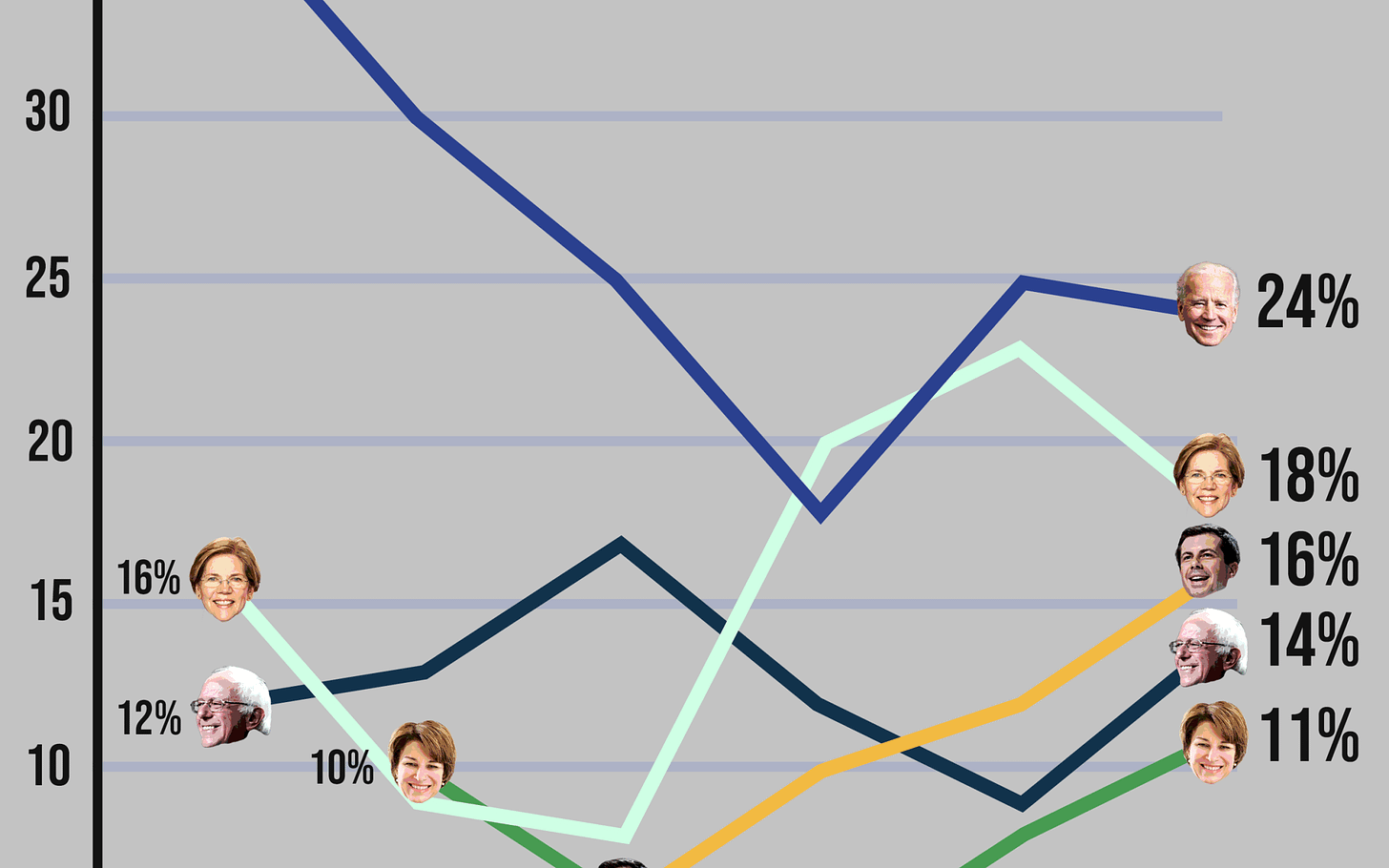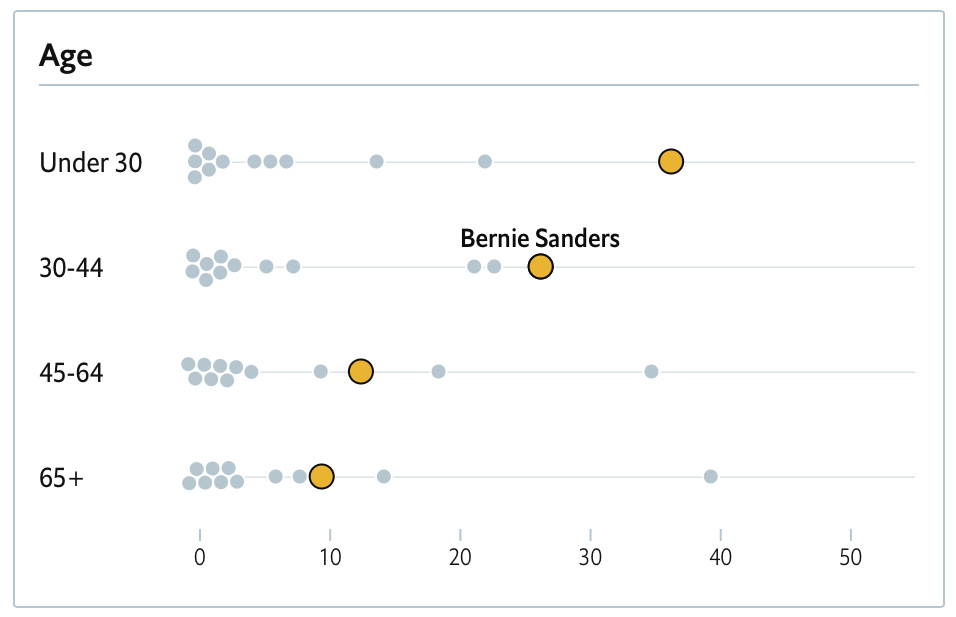The polling error that could cause a big miss in Bernie Sanders’s favor
Some Iowa polls have weird samples of young people, and others look far too old. Are polls of “likely voters” to blame?
What looks off to you about this poll?

These data come from pollster David Binder, who estimates that Joe Biden is currently at 24% in Iowa and with Warren at 18%, Buttigieg at 16, Sanders at 14 and Klobuchar at 11.

While the topline itself is surprising—Sanders polled much better and Biden slightly worse in Ann Selzer’s recent poll of the Hawkeye State—what gives me more pause is the crosstab among young people. In this poll, Warren is beating Sanders by 8 percentage points among voters under 45. That’s opposite what polls from The Economist and YouGov have been showing over the past month. In their estimates, Sanders has been out-performing Warren by about 10 percentage points in the same age group. (I’ll note that their sample is larger and generally of higher quality than what Binder is doing.)

The Des Moines Register/CNN poll from Ann Selzer also noted that Sanders was experiencing a surge among young people. Other polls have shown similar numbers, in both the magnitude of Sanders’s lead among voters under 45 and the trend in his support (both among them and overall).
Harry Enten of CNN also noted today that some pollsters don’t have a high enough ratio of young people in them. That could be because they aren’t factoring in the disproportionately young group of new Democratic primary voters, who also are more likely to favor Sanders than any other candidate. When pollsters like Binder filter to “likely” voters (LV) they can miss this block of young people.

To be clear, I am not peddling a conspiracy theory that polls are all underestimating Sanders because of LV filters—just that this poll and some others could be, relative to the higher quality polls of the 2020 race.
So, why does this matter?
I don’t want to get into the business of over-reacting to slight differences between pollsters. Nor do I want to be seen as “unskewing” the polls; I don’t think parsing out these differences allows us to correct polls for their demographic inconsistencies (and nor should we, as we have no idea what the exact targets are). But we do have a good idea about what neighborhood the targets should be in (and they generally show Sanders ahead with young people).
So my point? Let’s be smarter about these conflicting polls. There is a huge amount of uncertainty in the polling averages right now (I noted as much on Twitter) and we can maybe find some signal in the noise if we put more weight on the polls with more reasonable numbers under the hood.
Editor’s note:
Thanks for reading my thoughts on this subject. And thanks for subscribing! Your membership adds up and makes all this newslettering possible (reminder: I do all this work independently). Please consider sharing online or with a friend; the more readers, the merrier!
As always, send me your tips about what you’d like to read about next, or your feedback otherwise. You can reach me via email at elliott@thecrosstab.com or @gelliottmorris on Twitter.
—Elliott



